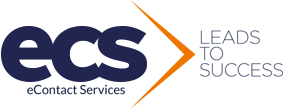Marketing leaders have lots of options when it comes to using their budgets. So how does telemarketing shape up compared to the alternatives?
The idea of a representative picking up a telephone and calling a prospect to gauge their interest in a solution sounds almost quaint – certainly very traditional – in the context of today’s technology-altered modern marketing landscape and yet, as a source of generating sales leads, telemarketing endures. It’s still a foundational strategic asset in the CMO’s arsenal. In this blog, we’ll find out why that’s the case.
Stacking things up
There are, predictably, a number of reasons.
- Yes, e-mail is cheap and straightforward. But according to one study (by insidesales.com) e-mail campaigns are also eight times less effective at engaging decision makers. Decision-makers are simply far more likely to engage with someone who can answer their questions directly, in real-time, and who can build rapport and trust.
- It’s not just engagement; telemarketing also comes out far ahead in the vital metric of conversion. Another study (by BIA/Kelsey) found conversion rates for outbound telemarketing stood at 10-15%, which is dramatically higher than other channels. Particularly for higher value sales which involve longer cycles, this is significant.
- Compared to other marketing channels, telemarketing is particularly effective for setting appointment which makes it obviously suited for lead generation. In one study, around 78% of decision-makers said they’d taken an appointment or attended an event after receiving a cold call. For them time is at a premium and a proactive approach to alerting them to an opportunity is often surprisingly welcome.
- In point 1, we saw how telemarketing outstripped e-mail. Where it’s also particularly effective though is following-up e-mail campaigns (or leads generated from any other sources). Evidence suggest that companies using telemarketing in this manner increase their conversion rates by around 50%.
- Lastly, the raw numbers. Research suggests that the average response rate for e-mail campaigns is around 0.6%. For direct mail campaigns, it’s around 4.4%. Telemarketing’s response rate is 5.6% (and that’s before taking conversion rates into account).
Of course, cold calls are often ignored and yes, since telemarketing involves contacting lower total numbers, it accounts for a smaller share of lead volume. But the evidence that telemarketing delivers value and continues to have a critical role to play in marketing strategy is very clear. To summarise, telemarketing delivers extremely strong conversion and engagement at low but targeted volume. Its personalized, real-time nature is effective especially for follow-ups and high-stakes pitches. The ideal B2B strategy blends high-volume channels with targeted telemarketing. Use content, SEO, email, and social to capture and nurture a wide base of leads—then apply telemarketing strategically to high-value or warmed-up prospects for conversion acceleration.






